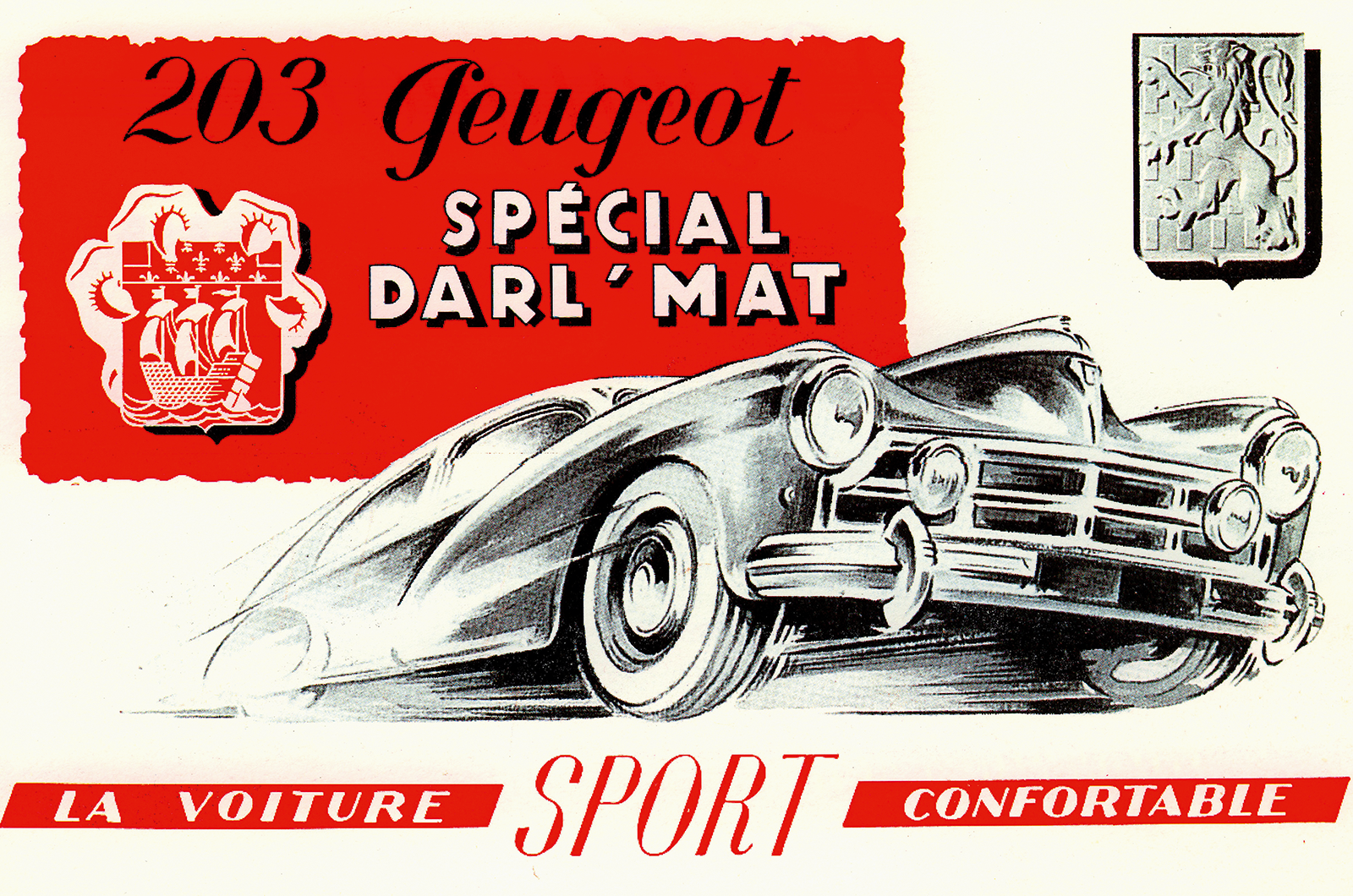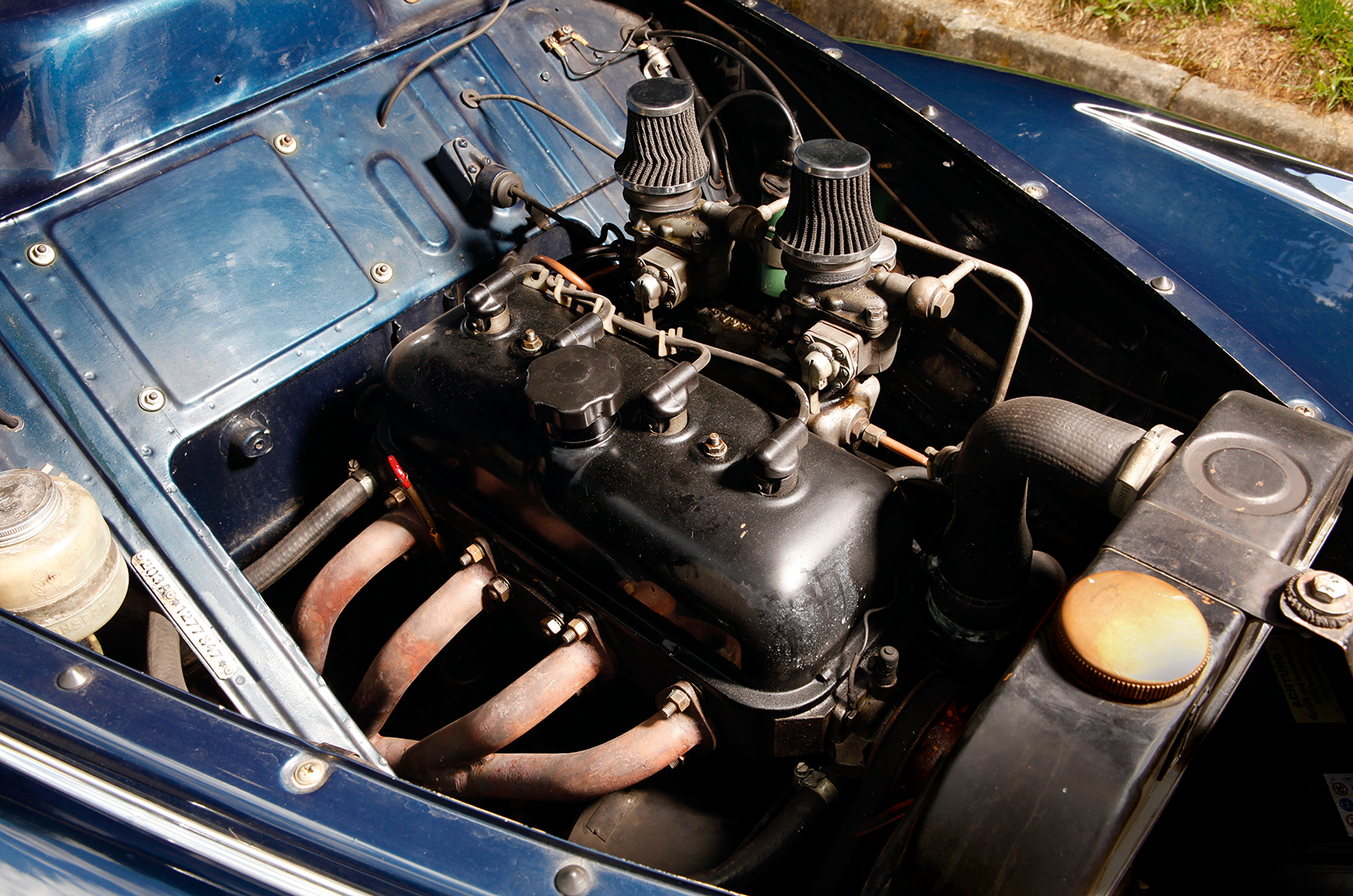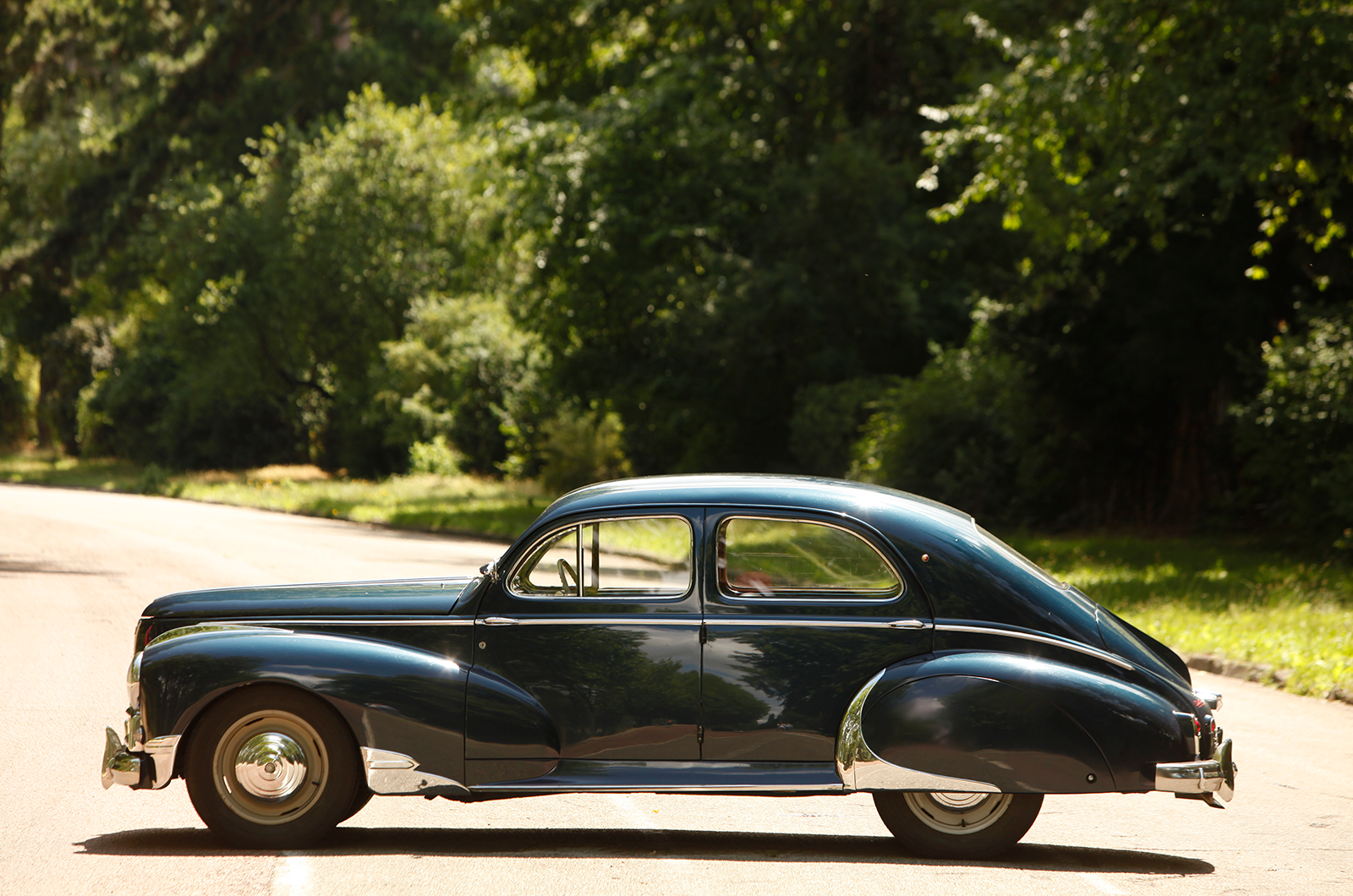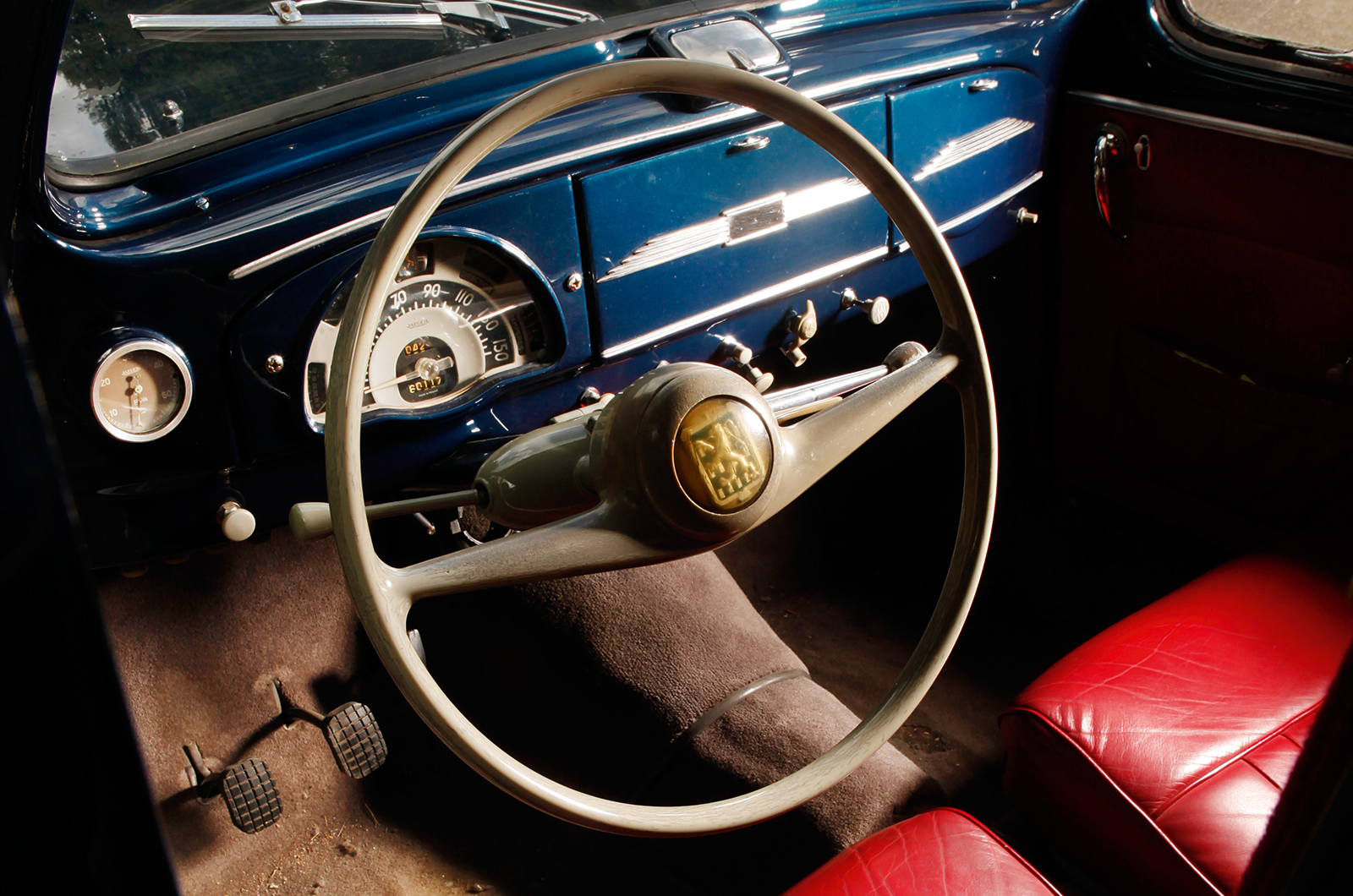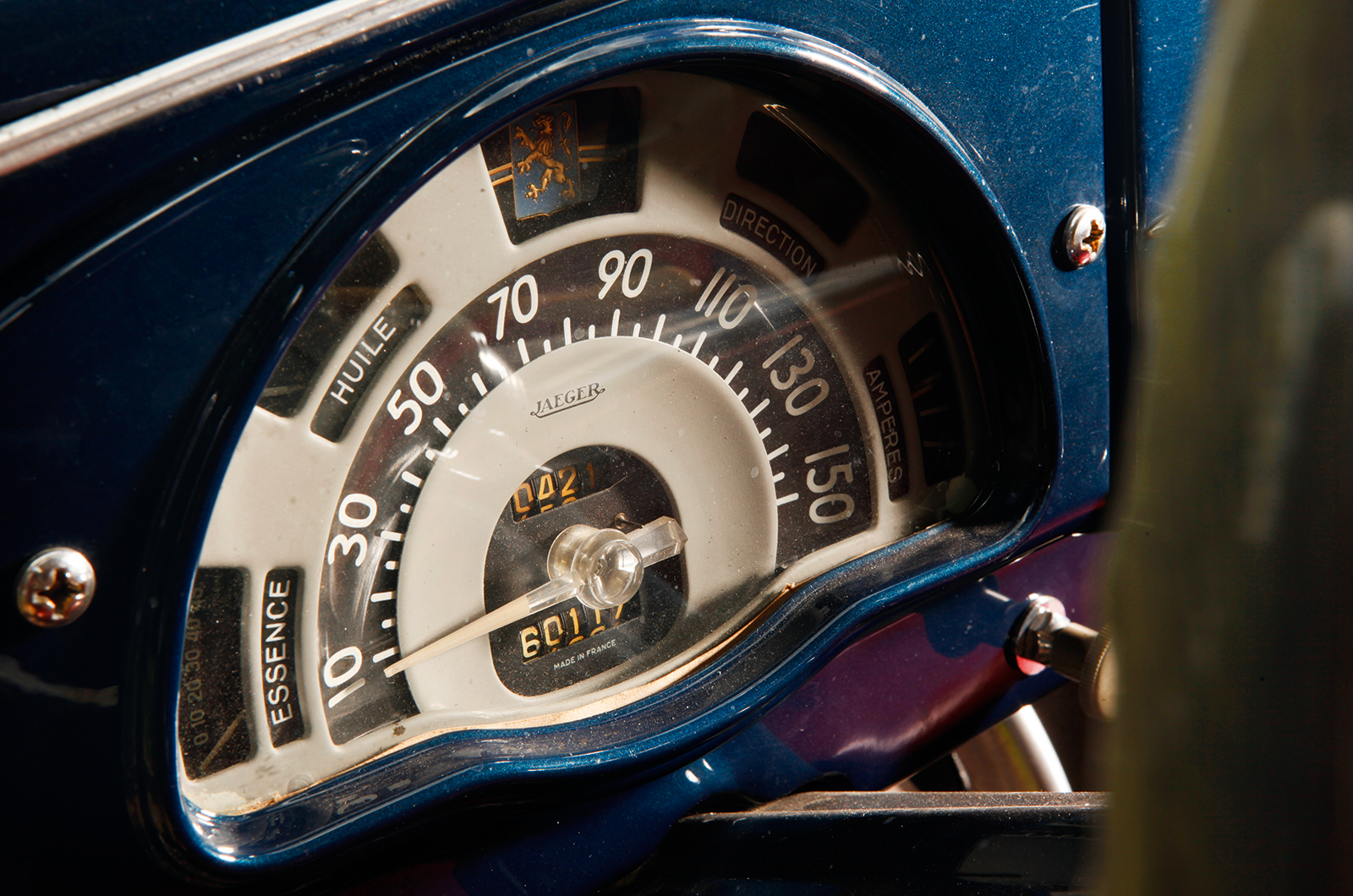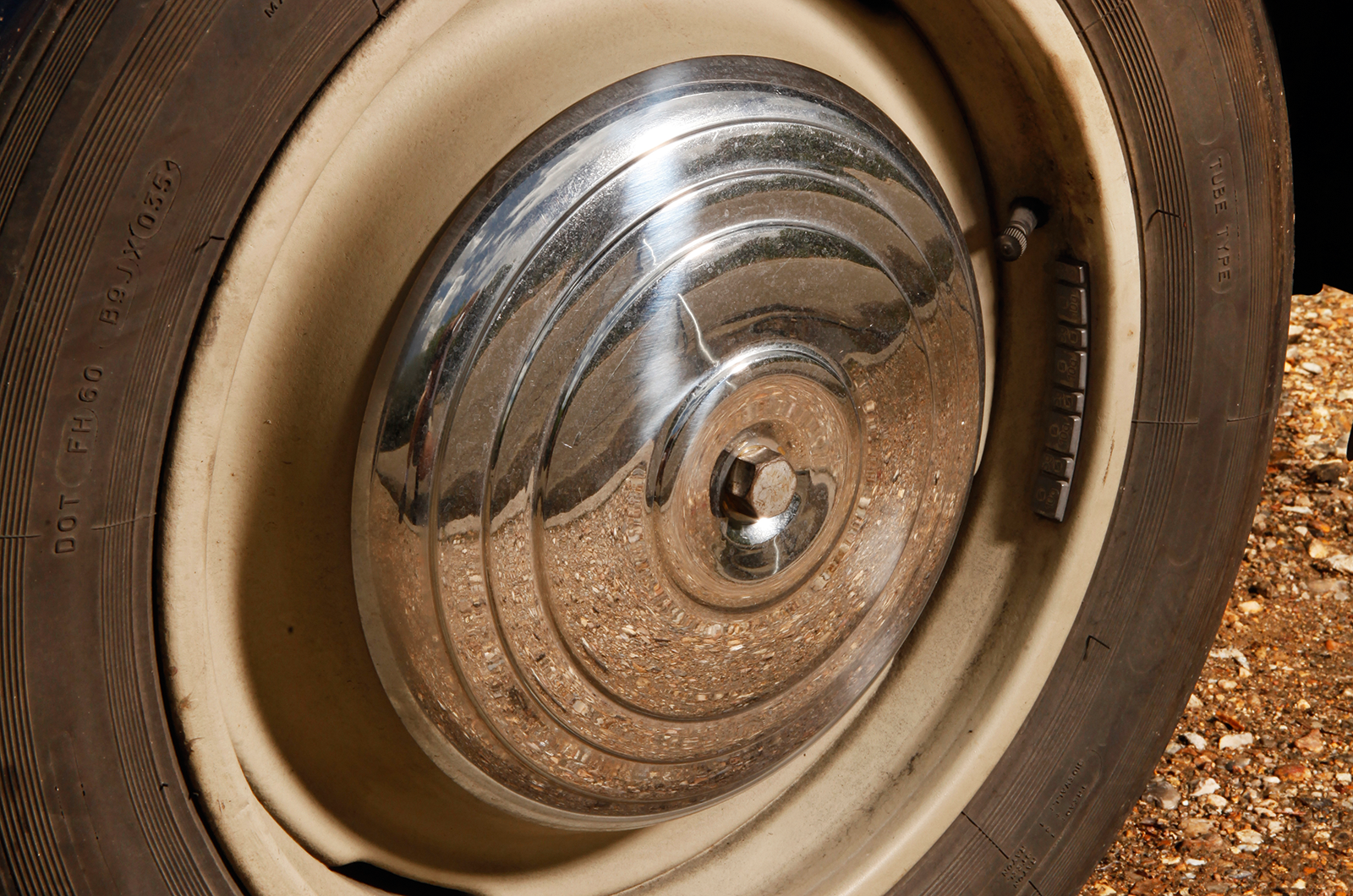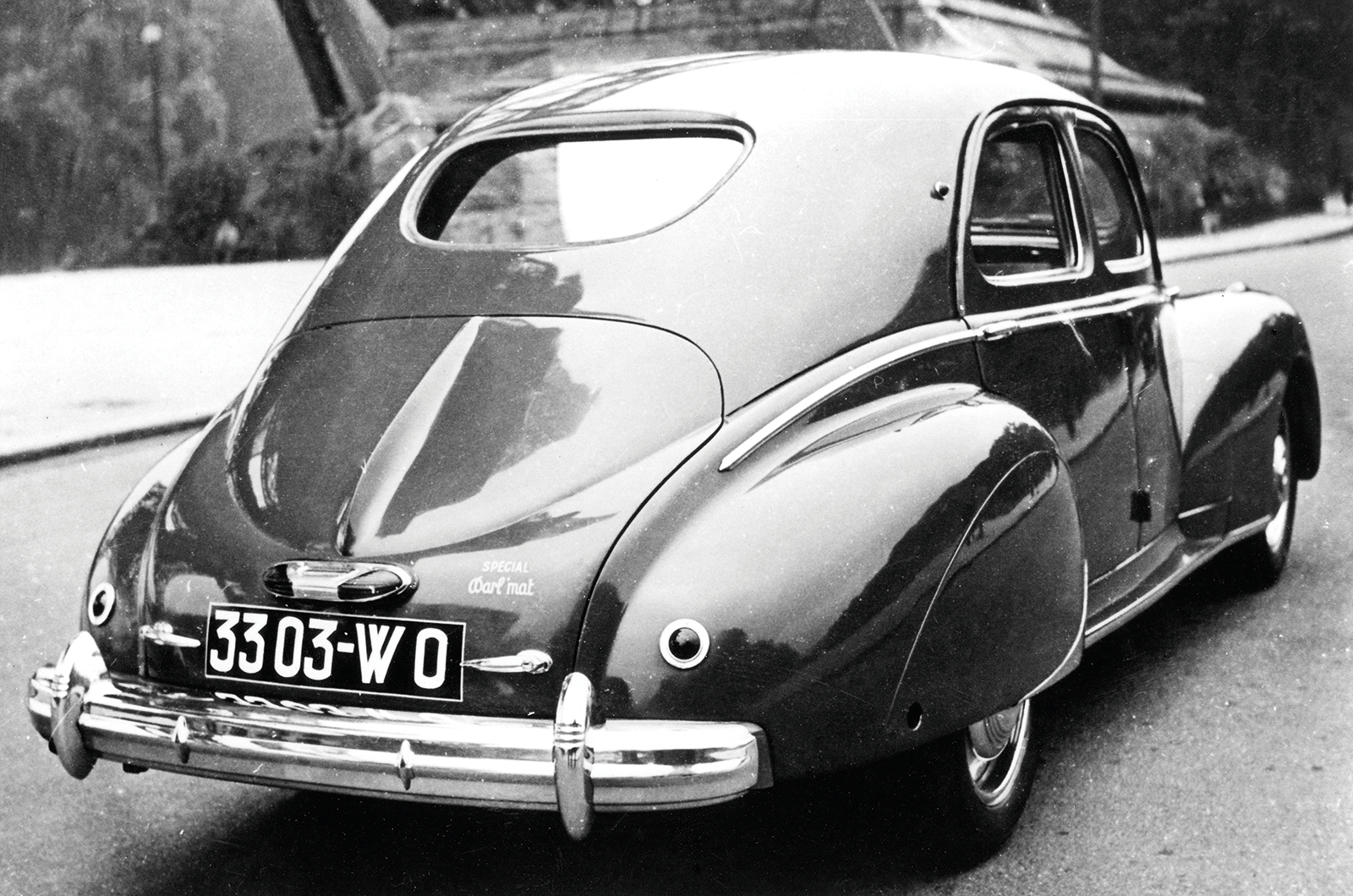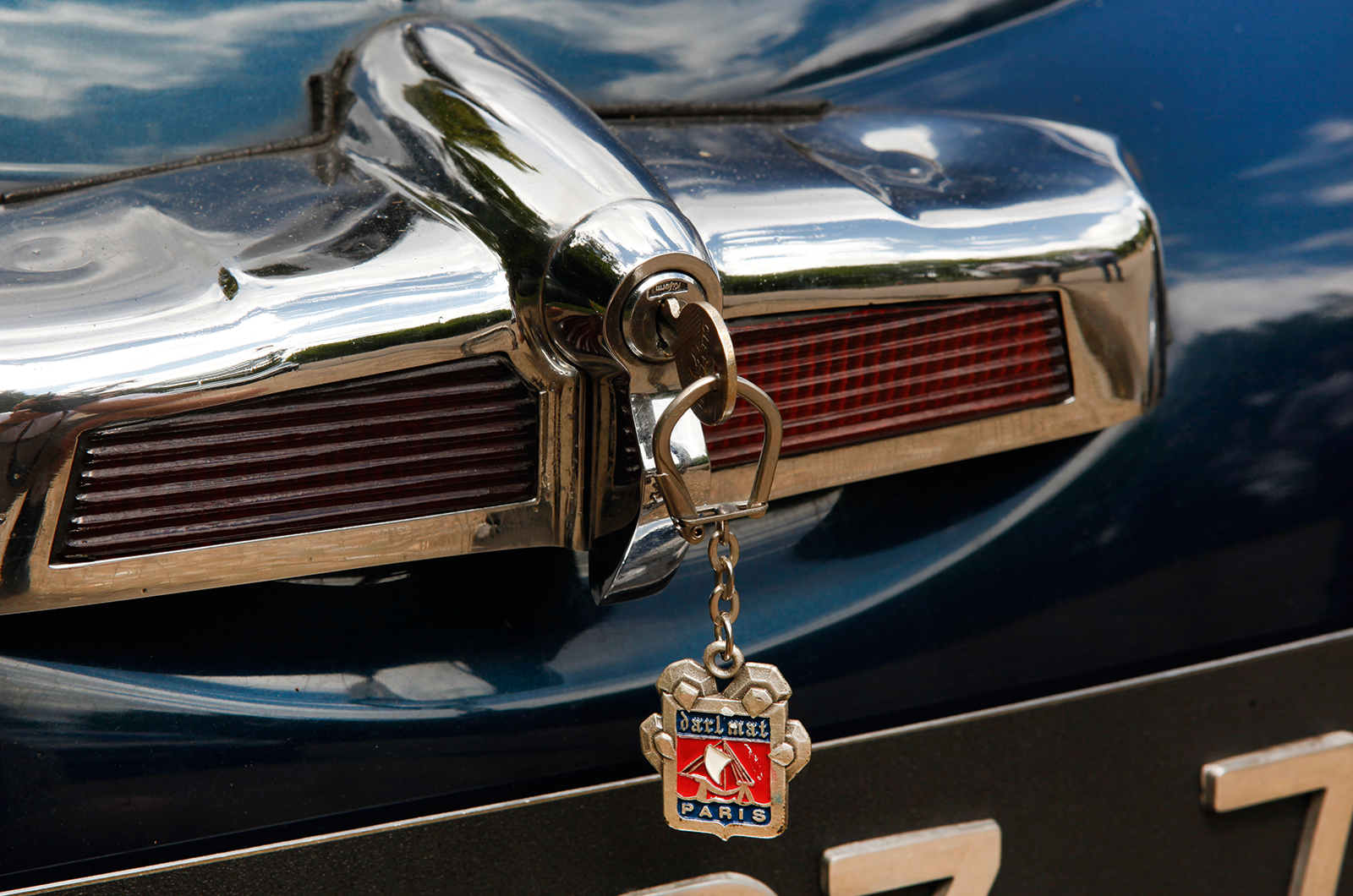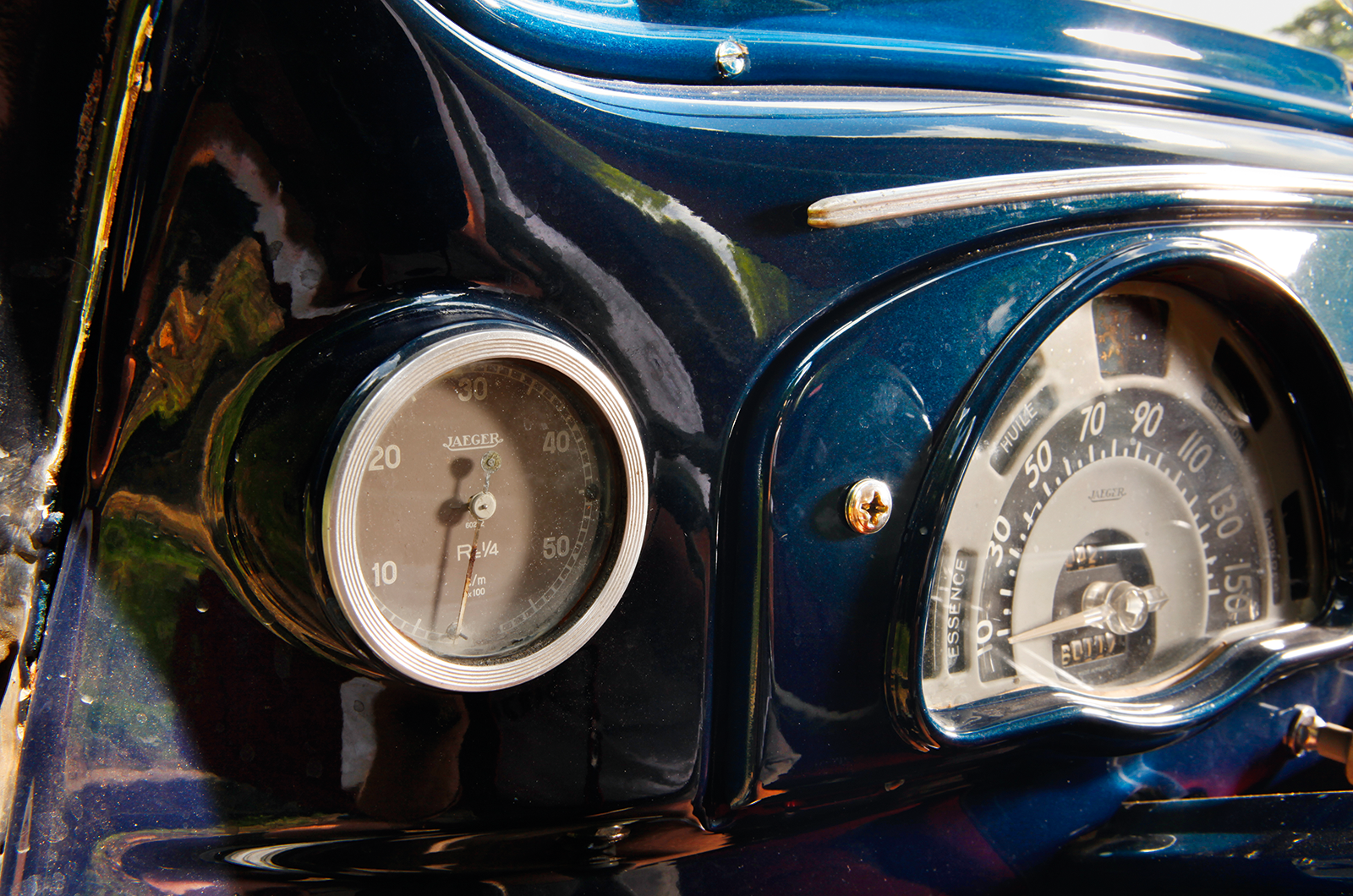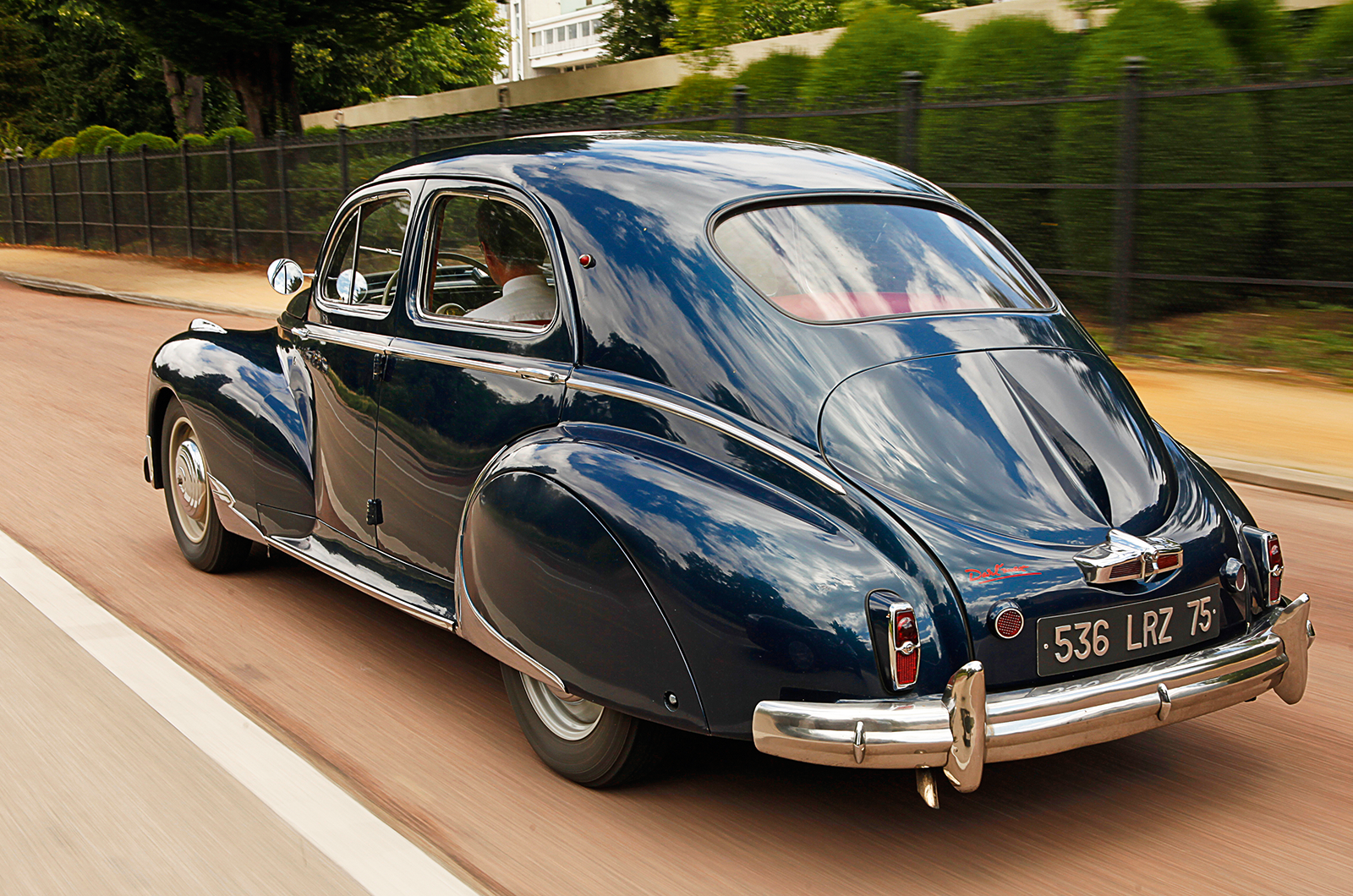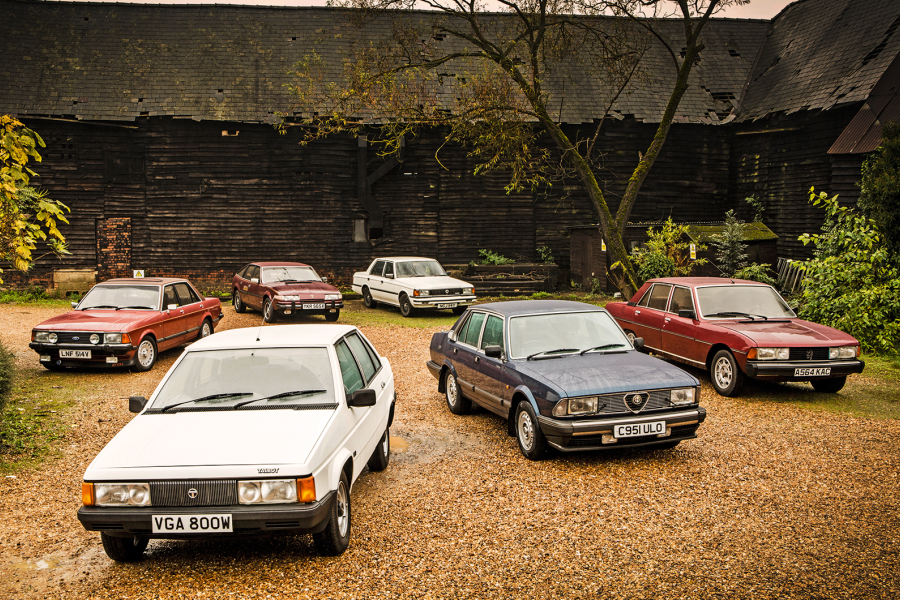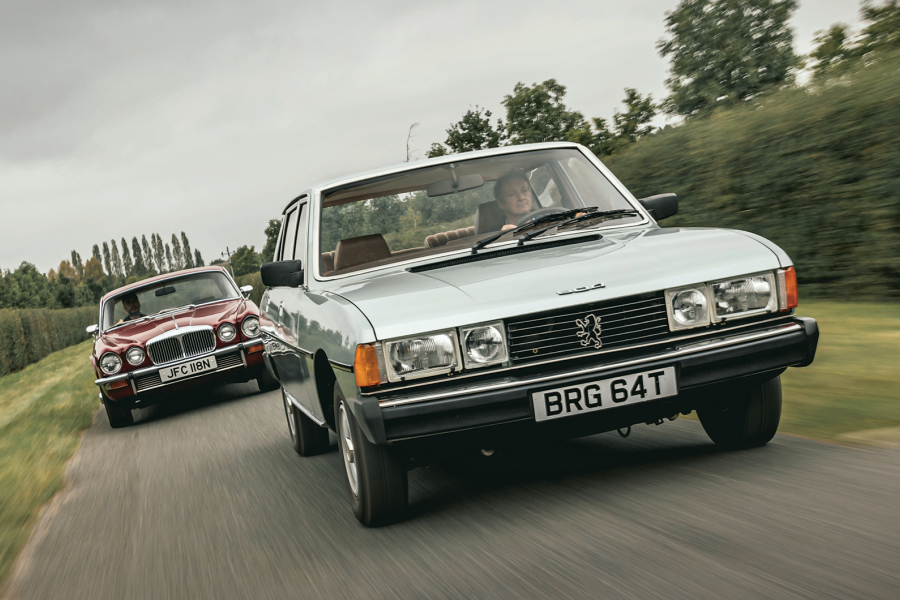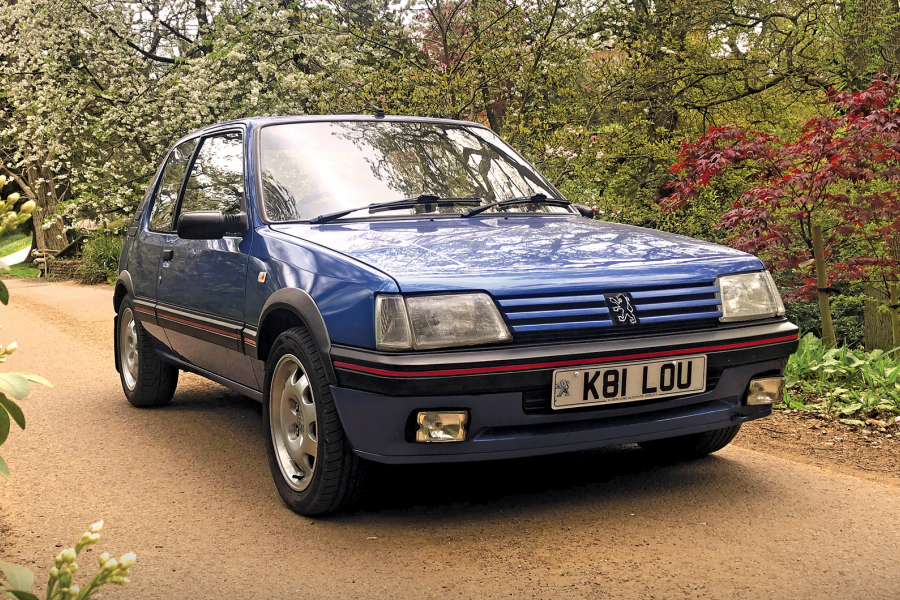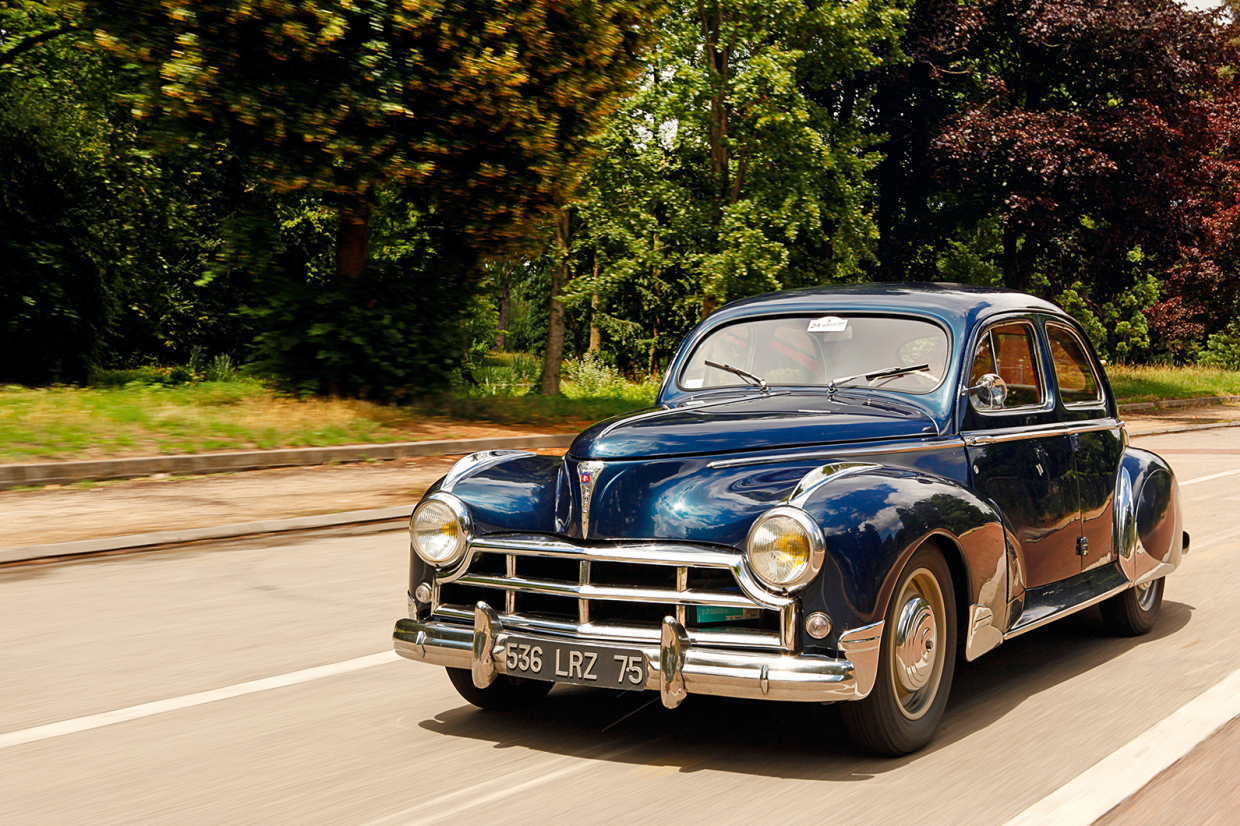
The Peugeot 203 Spécial Darl’mat – to give this car its full name – looks the business: lean, hunkered-down and seemingly wider.
You don’t need a tape measure to be convinced that a substantial 14cm, or 5½in, has been snipped from the 203’s height.
Then there’s the aluminium brightwork, the Americanised grille, the bootlid’s central rib and the rear spats. Showy, yes, but there’s ‘go’ to match, too.
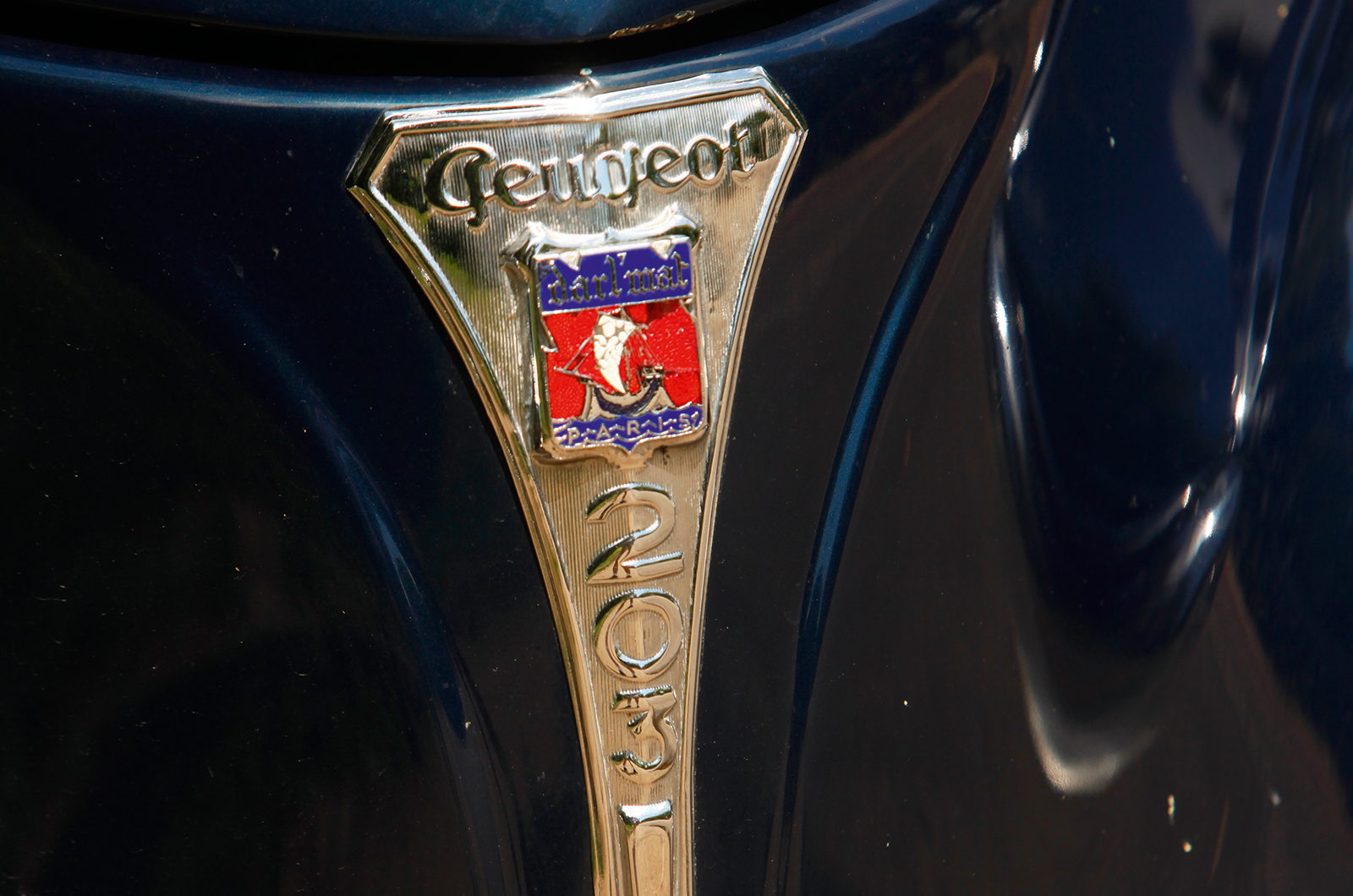
The car’s bonnet badge incorporates the Darl’mat sailing-ship crest
So why spend 1,700,000Fr on a modified 203, when the standard model cost about 600,000Fr?
That sort of money would buy you a Hotchkiss or Talbot ‘six’ – or two Citroën 15-Sixes.
The short answer is because the French car industry, struggling after WW2, simply didn’t offer a mid-sized sporting saloon.
Indeed, even before 1939 you’d have been hard-pushed to find such a vehicle in any French firm’s catalogue: there was a big jump from the mainstream offerings of the ‘Big Three’ to the luxury makes, and no low-production sports models to bridge the gap.

